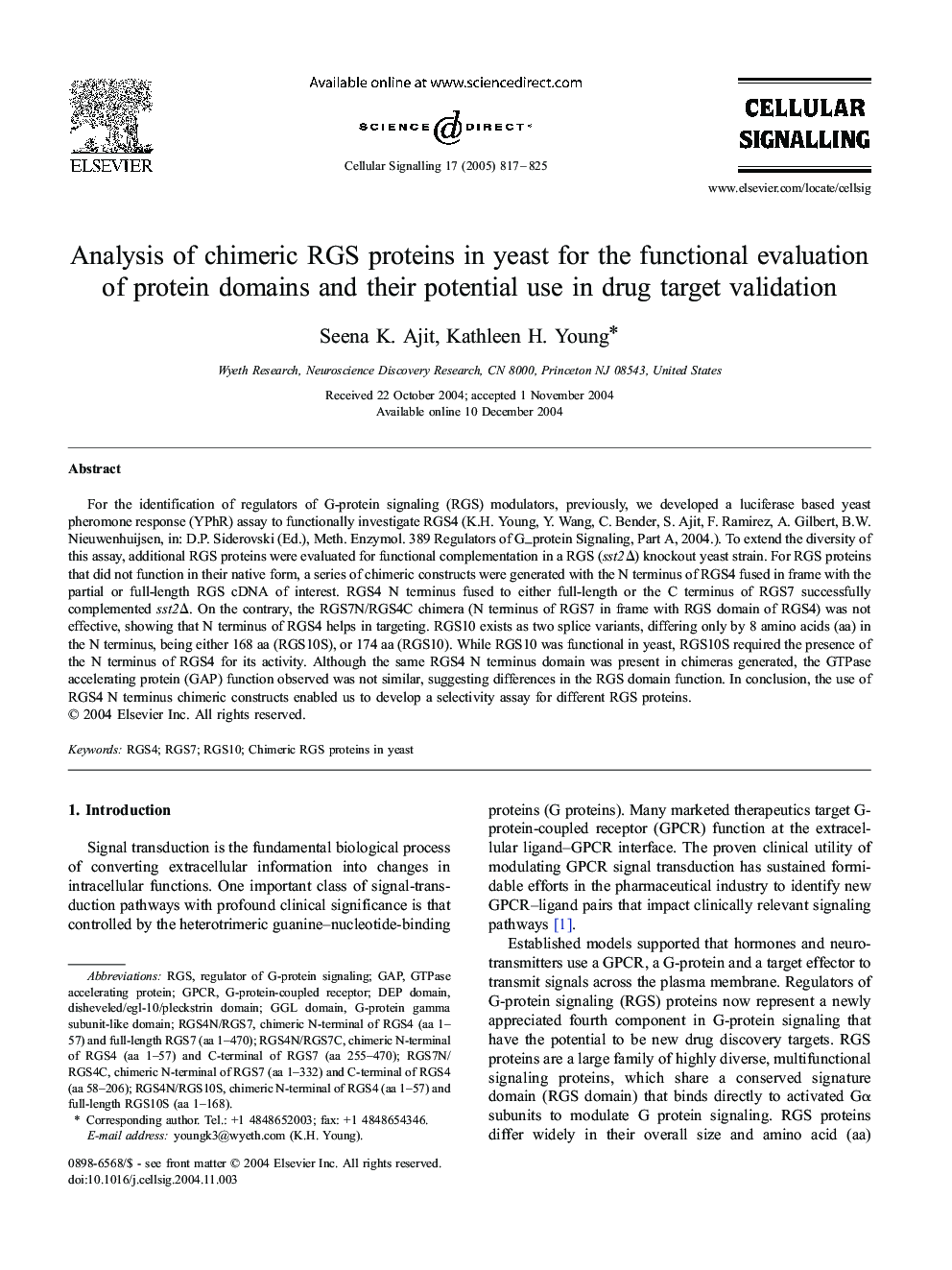| Article ID | Journal | Published Year | Pages | File Type |
|---|---|---|---|---|
| 10817109 | Cellular Signalling | 2005 | 9 Pages |
Abstract
For the identification of regulators of G-protein signaling (RGS) modulators, previously, we developed a luciferase based yeast pheromone response (YPhR) assay to functionally investigate RGS4 (K.H. Young, Y. Wang, C. Bender, S. Ajit, F. Ramirez, A. Gilbert, B.W. Nieuwenhuijsen, in: D.P. Siderovski (Ed.), Meth. Enzymol. 389 Regulators of G_protein Signaling, Part A, 2004.). To extend the diversity of this assay, additional RGS proteins were evaluated for functional complementation in a RGS (sst2Î) knockout yeast strain. For RGS proteins that did not function in their native form, a series of chimeric constructs were generated with the N terminus of RGS4 fused in frame with the partial or full-length RGS cDNA of interest. RGS4 N terminus fused to either full-length or the C terminus of RGS7 successfully complemented sst2Î. On the contrary, the RGS7N/RGS4C chimera (N terminus of RGS7 in frame with RGS domain of RGS4) was not effective, showing that N terminus of RGS4 helps in targeting. RGS10 exists as two splice variants, differing only by 8 amino acids (aa) in the N terminus, being either 168 aa (RGS10S), or 174 aa (RGS10). While RGS10 was functional in yeast, RGS10S required the presence of the N terminus of RGS4 for its activity. Although the same RGS4 N terminus domain was present in chimeras generated, the GTPase accelerating protein (GAP) function observed was not similar, suggesting differences in the RGS domain function. In conclusion, the use of RGS4 N terminus chimeric constructs enabled us to develop a selectivity assay for different RGS proteins.
Keywords
Related Topics
Life Sciences
Biochemistry, Genetics and Molecular Biology
Biochemistry
Authors
Seena K. Ajit, Kathleen H. Young,
